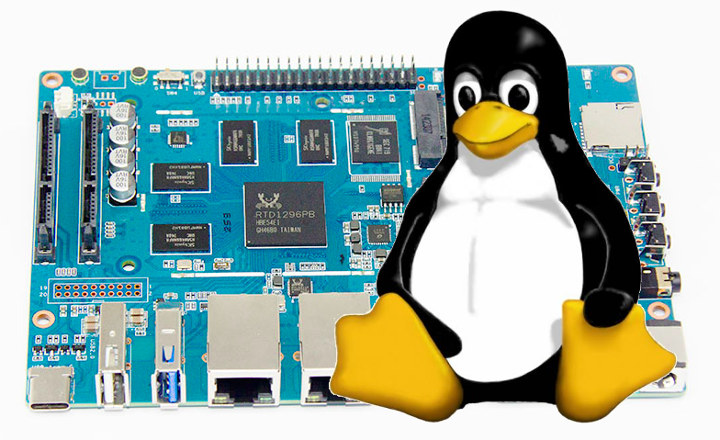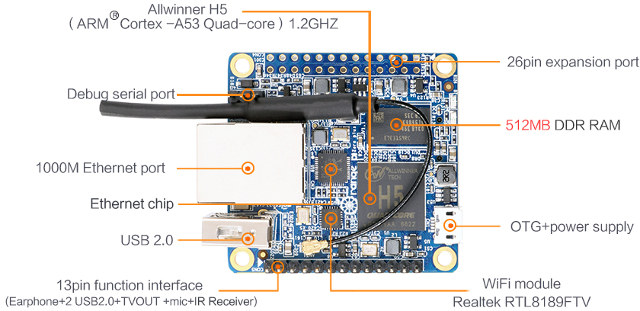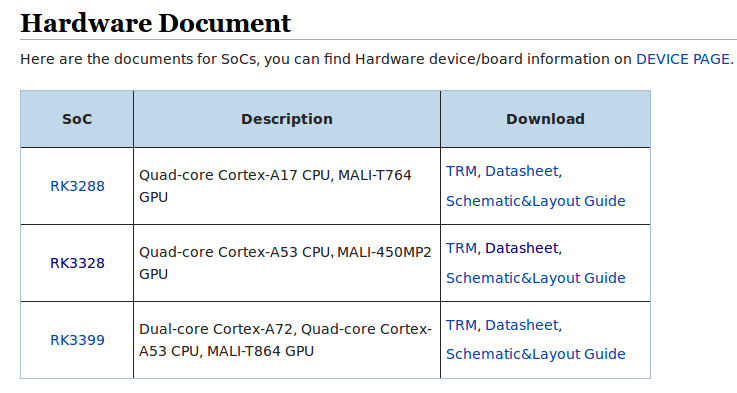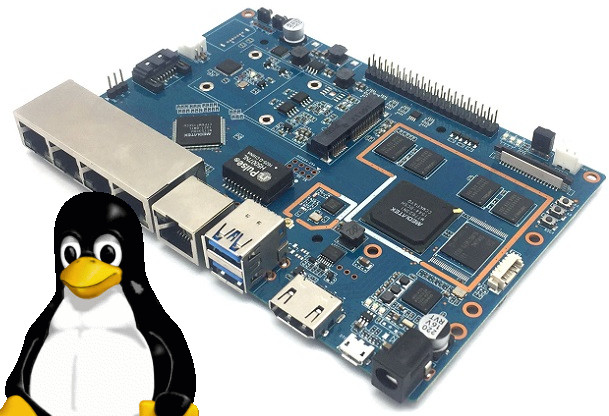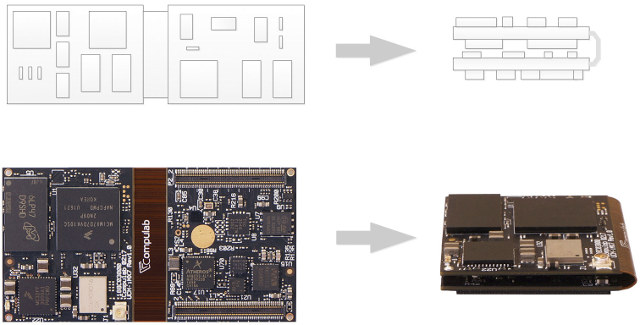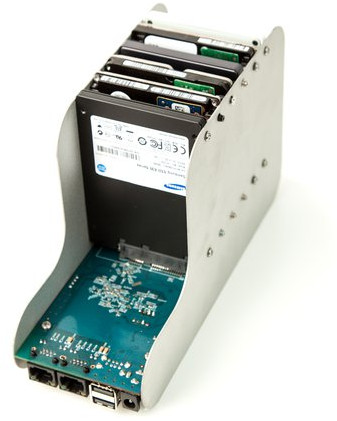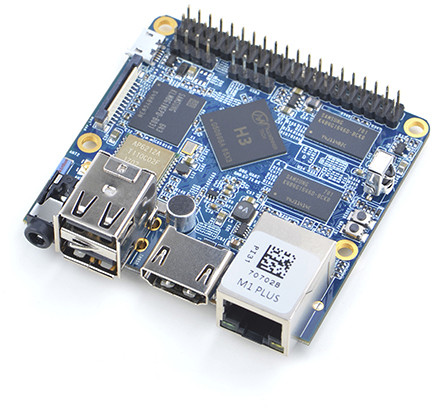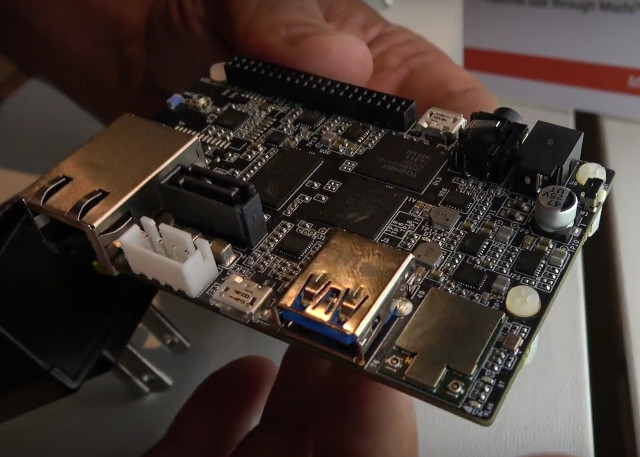Media centers based on Realtek RTD1295 or RTD1296 processors have been around for a few years. They usually run both Android and OpenWrt operating systems for respectively media functions (4K video playback, HDMI input recording…), and NAS functions like file sharing. media downloads, etc…. SinoVoIP also unveiled Banana Pi BPI-W2 board powered by RTD1296 last year, but so far I was not aware of any source code for the target. Synlogy actually released a Linux 4.4 tarball a while ago, but more recently SinoVoIP released Linux 4.9.119 and U-boot source code for RTD1296 in Github. You’ll find instructions to build from source, and flash the resulting U-boot and Kernel image from the Github page. There’s also some mainline Linux support for RTD1295, but maybe this release will help further speed up mainline support. Beside code for RTD129x (RTD1295/RTD1296), we’ll find references to RTD139x (RTD1395) a cost-down version of RTD1295, as […]
$15 Orange Pi Zero Plus Board Released with Allwinner H5 SoC, Gigabit Ethernet, WiFi, and SPI flash
We had Orange Pi Zero, followed by Orange Pi Zero Plus 2, then Orange Pi Zero Plus 2 H5, but now there’s another “Zero” model that’s called Orange Pi Zero Plus, which like Orange Pi Zero Plus 2 H5 board is based on Allwinner H5 processor, but adds a faster Gigabit Ethernet port, and offers a fairly different features set compared to the first Orange Pi H5 board, albeit in the same form factor. Orange Pi Zero Plus specifications with highlights in bold and stricken-through showing difference with Orange Pi Plus 2 H5 model: SoC – Allwinner H5 quad core Cortex A53 processor with hexa core Mali-450MP4 GPU System Memory – 512 MB DDR3 Storage – 8GB eMMC flash, micro SD card slot + 2MB SPI flash Video Output – HDMI ; AV port via 13-pin header Connectivity – Gigabit Ethernet, 802.11 b/g/n WiFi (Realtek RTL8189FTV) with u.FL antenna connector […]
Rockchip Has Setup an Official Open Source Website with Software & Hardware Documentation, Source Code
As a young engineer, I first understood the importance of good documentation thanks to an incomplete Holtek MCU datasheet that made us waste weeks of development, and the value open source software thanks to Sigma Designs’ SDK that was full of binary blobs with our applications often crashing inside those, leading to software development delays, especially since we had access to limited support. More recently, if you ever worked with the most popular Chinese processors found in ARM Linux development board, usually made by Allwinner, Amlogic, or Rockchip, you must have gone through roadblocks due to a lack of documentation and software support. So far, Allwinner is purely relying on linux-sunxi community and “leaks” of their documentation and SDKs, while Amlogic has had their “open linux” microsite for several years, but you won’t find complete documentation like technical reference manual, schematics, and part of the source code requires you to […]
Banana Pi BPI-R2’s U-boot & Linux 4.4 Source Code & MediaTek MT7623N Datasheet Released
Banana Pi BPI-R2 is a multimedia router board powered by MediaTek MT7623N quad core processor with 2GB RAM, 5 Gigabit Ethernet ports, up to two SATA ports, two USB 3.0 ports, HDMI output, and I/O headers. The board is not for sale yet, but the company has recently released the source code with U-boot and Linux 4.4.70, as well as a datasheet for MediaTek MT7623N processor. The source code can be found on Github, so let’s see if we can build it:
|
1 2 3 4 5 6 7 8 9 10 11 12 13 14 15 16 17 18 19 20 21 22 23 |
git clone https://github.com/BPI-SINOVOIP/BPI-R2-bsp cd BPI-R2-bsp/ sudo apt install gcc-arm-linux-gnueabihf ./build.sh ./build.sh NOTICE: new build.sh default select BPI-R2-720P and pack all boards supported boards: BPI-R2-720P BPI-R2-720P configured. Now run `make` This tool support following building mode(s): -------------------------------------------------------------------------------- 1. Build all, uboot and kernel and pack to download images. 2. Build uboot only. 3. Build kernel only. 4. kernel configure. 5. Pack the builds to target download image, this step must execute after u-boot, kernel and rootfs build out 6. update files for SD 7. Clean all build. -------------------------------------------------------------------------------- Please choose a mode(1-7): 1 |
After a couple of minutes, the build would end with:
|
1 2 3 4 5 |
usr/lib/u-boot/bananapi/ usr/lib/u-boot/bananapi/bpi-r2/ usr/lib/u-boot/bananapi/bpi-r2/BPI-R2-720P-2k.img.gz Build success! |
For the very last step, it asks you to login as root / sudoer, which it should not do… But we end up with the images, so at least it builds:
|
1 2 3 4 5 6 7 8 |
ls -lh ./SD/ total 27M drwxrwxr-x 2 jaufranc jaufranc 4.0K Jun 28 10:46 100MB -rw-rw-r-- 1 jaufranc jaufranc 22M Jun 28 10:46 4.4.70-BPI-R2-Kernel.tgz -rw-rw-r-- 1 jaufranc jaufranc 151K Jun 28 10:46 BOOTLOADER-bpi-r2.tgz drwxrwxr-x 3 jaufranc jaufranc 4.0K Jun 28 10:46 BPI-BOOT -rw-rw-r-- 1 jaufranc jaufranc 4.8M Jun 28 10:46 BPI-BOOT-bpi-r2.tgz drwxrwxr-x 4 jaufranc jaufranc 4.0K Jun 28 10:46 BPI-ROOT |
MediaTek has also been active by committing patchsets for MT7623 to the Linux Kernel Mailing List, so mainline Linux is an eventual possibility for […]
Compulab’s Miniature “Bend & Fold” UCM-iMX7 System-on-Module Could Fit into a Watch
Many companies are still releasing NXP – soon to be Qualcomm – i.MX 6/7 system-on-modules, but I don’t cover all of them, since we have already many to choose from. But Compulab’s latest UCM-iMX7 SoM differentiates itself by it size, using the company’s “Ultra-compact Multilevel Module” (UCMM) technology, to pack NXP i.MX7 processor, 2GB RAM, 64 GB eMMC flash, and a wireless module into a 30 x 27 x 8 mm volume that could potentially fit into something as small as a watch. The picture above clearly shows how UCMM technology works with the module comprised of two rigid PCBs and one flexible layer routing signals between the two allowing to bend and fold the rigid parts together to form a vertical stack. The principle could be extended to more PCBs and flexible layers, sof for example you could have four PCBs with three flexible layers in future / custom […]
GnuBee Personal Cloud 1 Low Cost Linux NAS Supports Up to Six 2.5″ SATA Drives (Crowdfunding)
Networked Access Storage (NAS) with a large number of SATA bays usually cost several hundreds dollars up to thousands of dollars depending on the features set and performance, but there’s a new a project called GnuBee Personal Cloud 1, or GB-PC1, that delivers a MIPS Linux system supporting up to six 2.5″ SATA drives for less than $200. GB-PC1 NAS specifications: Processor – MediaTek MT7621A dual core, quad thread processor @ 880 MHz, overclockable to 1.2 GHz System Memory – 512 MB DDR3 Storage – micro SD card slot tested up to 64 GB, 6x 2.5” SATA HDD or SSD Connectivity – Dual Gigabit Ethernet USB – 1x USB 3.0 port, 2x USB 2.0 ports Serial port – 3-pin J1 connector or 3.5 mm audio-type jack Power – 12 VDC @ 3 A via 5.5 mm x 2.1 mm, center-positive barrel jack Dimensions – 21.6 cm (L) x 7 cm […]
FriendlyELEC NanoPi M1 Plus Allwinner H3 Board Adds Gigabit Ethernet, WiFi & Bluetooth, and an 8GB eMMC Flash
FriendlyELEC has introduced an update to NanoPi M1 board, aptly named NanoPi M1 Plus with a similar form factor and Allwinner H3 processor, but adding Gigabit Ethernet, 802.11 b/g/n WiFi & Bluetooth, and an 8GB eMMC flash, at the expense of one USB port that had to go to make place for the new features, and it got a little wider too.NanoPi M1 Plus board specifications: SoC – Allwinner H3 quad core Cortex A7 @ 1.2 GHz with an ARM Mali-400MP2 GPU up to 600 MHz System Memory – 1GB DDR3 Storage – 8GB eMMC flash + micro SD card slot Video & Audio Output – HDMI and 3.5mm jack for CVBS (composite + stereo audio) Connectivity – Gigabit Ethernet, 802.11 b/g/n WiFi and Bluetooth 4.0 dual mode (classic + low energy) with chip antenna and IPEX/u.FL connector USB – 2x USB 2.0 host ports, 1x 4-pin USB 2.0 […]
AndromedaBox Networking Edge Board Includes a Dual Core Marvell Processor, SATA, Gigabit Ethernet, and More
Last year, Marvell introduced AndroMeda Box Edge IoT board using 96Boards form factor and running Brillo (now Android Things), but the company has been working on the similarly named AndromedaBox Networking Edge (ANE) board with a tweaked version of 96Boards form factor including Gigabit Ethernet and SATA, and powered by a dual core ARMADA 3700 processor. AndromedaBox Networking Edge specifications: SoC – Marvell ARMADA LP 3700 dual-core ARM Cortex 53 processor @ up to 1.2 GHz System Memory – 512MB LPDDR4 Storage – 8GB eMMC flash, 1x SATA 3.0 port Connectivity – 1x Gigabit Ethernet RJ45 port, 1×1 802.11ac Wi-Fi, and Bluetooth 4.2 USB – 2x micro USB 2.0 port, 1x USB 3.0 port Expansion – 1x PCIe 2.0 (maybe via a slot on the back of the board), 40-pin LS (Low Speed) Expansion connector Power Supply – Likely 8 to 18V input as per 96Boards specs Dimensions – 85 […]


